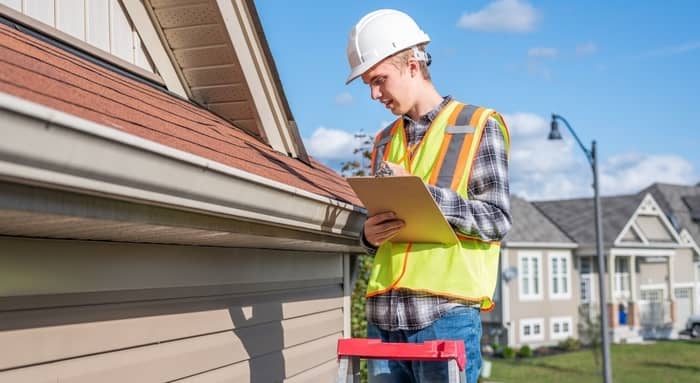
Roofing is one of the most important parts of the house. It protects your home against harsh weather such as strong winds, storms, high temperatures, and much more. That is why it is important to ensure that your roofing is in good condition all the time. But just like other parts of the house, roofing usually wears out over time and needs regular repair to keep in good shape. That is why you need to inspect it regularly and make necessary repairs and regular gutter maintenance to keep it intact. However, a proper roof inspection can only be done if you have the necessary roof inspection knowledge, experience, and tools. This roofing company has a team of experts who will inspect your roof thoroughly and provide a detailed report on changes that need to be done. In this article, we will give you proven roof inspection tips.
-
Have a Look Around
One of the top things to do when inspecting the roof is to look around to detect faults in the roof. You can only make meaningful repairs to the roof if you know the issues that your roof is facing and that can only be possible if you look around. Walk around the roof and keenly check for faults such as aging, damage, and sagging.
-
Identify Areas on The Roof With Water Damage
One of the greatest enemies of any roof is water damage. So, when inspecting your roof, you should pay extra attention to any form of water damage. Inspect the roof thoroughly and keenly note if you see any sign of water damage. Some of the things that show there is water damage on the roof include the presence of algae and moss. Also, if there are huge piles of leaves in one area, then that is also an indication that water could be leaking on the roof.
-
Inspect the Shingles
The shingles play a crucial role in protecting the structural element of the roof from wind, rain, and exposure to sunlight. If the shingles are not in good condition, then your roof is more likely to get damaged quickly. Keenly inspect the shingles to check for any sign of damage. Most shingle damages are usually caused by hot air from the attics which causes the shingles to curl, thus putting your home at risk of damage from sunlight exposure, rain, and wind. Damaged shingles can also result in poor ventilation of the roof. So, when inspecting the roof, also inspect the shingles and take note of any damage.
-
Clean The Gutters Regularly
When inspecting the roof, most people usually overlook the gutters and that is usually a big mistake. The gutters play a crucial role in the roof by ensuring that there is proper water management. When it rains, gutters effectively channel water from your roof via the downspout and direct it to the appropriate channel outside your home. If the gutters are damaged, leaking, or blocked, your roof will pick up a lot of debris and leaves, causing water to stagnate and eventually overflow, causing more damage to the roof. You can avoid this by ensuring that the gutters are well cleaned and free of leaves and debris that block the flow of water.
-
Look Out for Granule Loss
When inspecting the roof, check closely to see if there are signs of granules loss. If there is granule loss, then that is an indication that your shingles have been severely affected by harsh weather or they have aged and thus need replacement. Remember that if the shingle texture is compromised, then they will not be able to protect your home against harsh weather.
-
Inspect the Attic
If your house has an attic, then you should get up close and check for signs of water leakage, especially after a heavy storm. This will help you detect damage that cannot be easily seen from the ladder or from the ground.
-
Inspect Previous Repairs
If you have made some repairs before on your roof, it is important to check them when inspecting the roof. Some repairs usually last for long while others get damaged quickly. The only way to know if the repair is in good shape or not is by inspecting them during your routine roof inspection.
-
Inspect The Roof Material
Like other sections of the house, the roof usually ages with time. Therefore, it is crucial to check the condition of the roof material that you installed when inspecting the roof. If the material is loose and wobbly, then that is an indication that it is worn out and needs replacement.
-
Highlight Damaged Areas
When inspecting the roof, make sure you highlight damaged areas. For instance, if you notice that a shingle is damaged or aged, highlight it and take necessary action before the problem escalates and becomes very expensive to repair.
